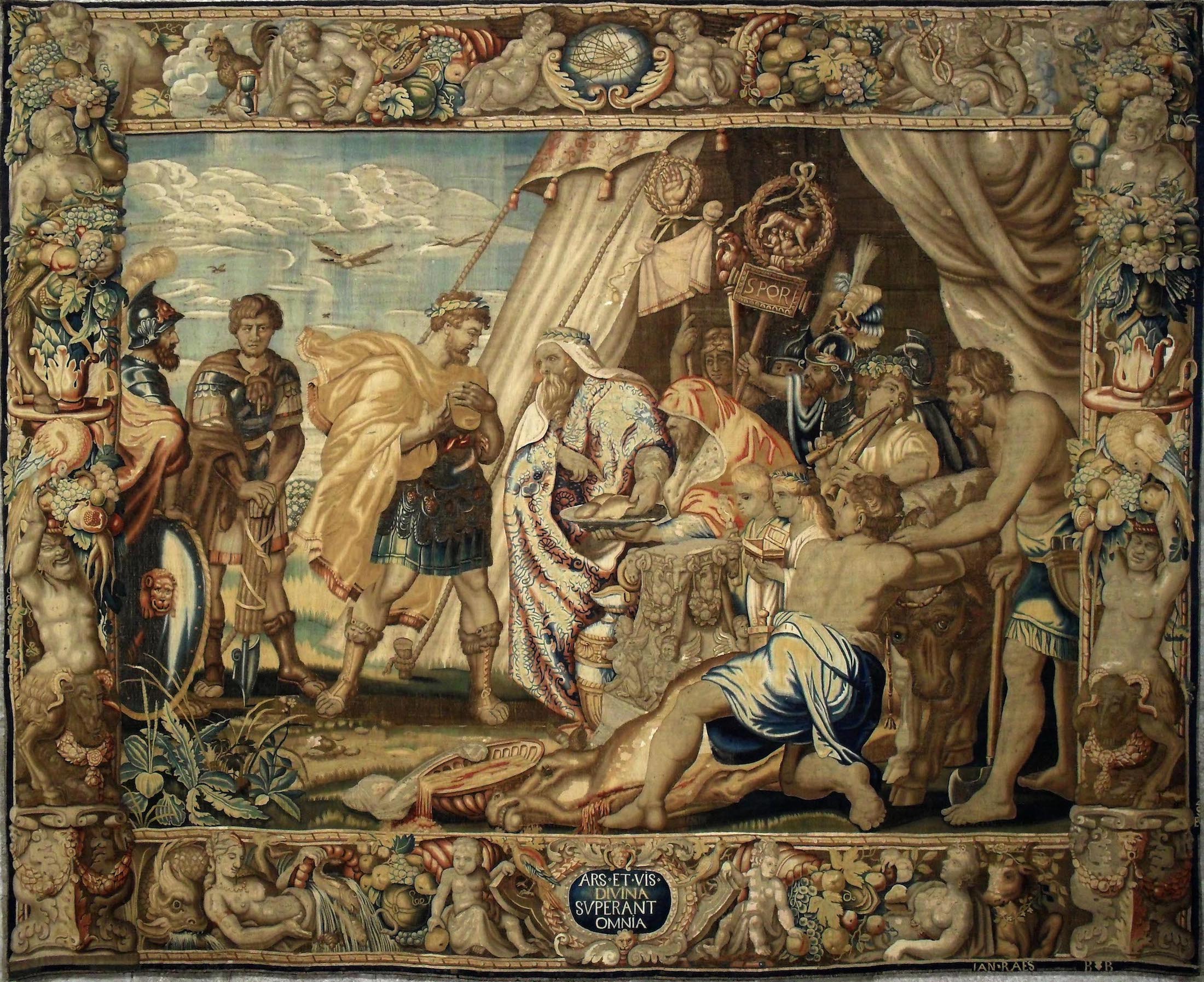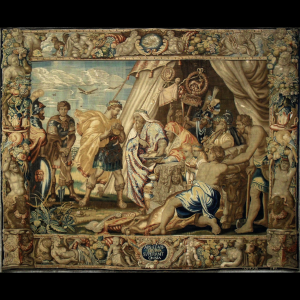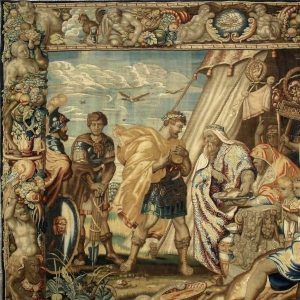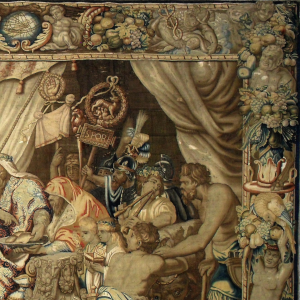Publius Decius Mus Series: Publius Decius Mus consults with the Haruspices
Author: Jan Raes II (maker) & Peter Paul Rubens (painter)
Origin: Brussels, Flanders
Dating: 1618-1643
Material: Wool & Silk
Dimensions (cm): 410 x 477
Inv. no.: PD0202
This tapestry belongs to the Publius Decius Mus series based on ‘cartoons’ by Peter Paul Rubens. In it, the story of the Roman Consul Publius Decius Mus, according to an extensive description of the work ‘Ab urbe condita’, by the Roman Historian Titus Livius. The Consuls Publius Decius Mus and Titus Manlius were in command of the Romans in the war against the Latins (340-338 BC). Both had a dream that foretold ‘that a General of one of the armies and the opposite armies would be sacrificed to the hells and the sacrifice of one of the Consuls was necessary to defeat the enemy. Carrying out an act of devotion, Decius Mus sent himself to death in the Vesuvius Battle’.
The series of seven Tapestries narrates several episodes relating to this story. Of the seven, the Ducal Palace owns five. This set of tapestries demonstrates Rubens’ creative genius; he used ‘Limited compositions of some heroic and important figures, drawn in dramatic poses and conceived in bright colours’. This is quite the opposite of the theme used previously in the Tapestry that is characterised by scenes that included a large number of characters inserted in very detailed landscapes. Rubens also works in a different way: the borders of these tapestries are no longer representations of “small individualised scenes, as it was customary at the time’ and are now ‘decorated with figures of satyrs among fruit, flowers and exotic birds; female figures reclining over rivers full of aquatic creatures (fishes, crabs, serpents); and human figures with allegorical references to the passing of time, the course and purpose of human life”. Maria Antónia Quina, also explains that “the composition of these borderes reminds us of the work of Jacob Jordens in his Ulysses series, from around 1635 and known by means of a subsequent edition from 1665-66 in the Quirinal Palace, in Rome”. It should be added that Rubens uses in these tapestries a set of never-before used colours, which forced the weavers to use new pigments “for new shades, such as: lemon yellow and yellow lilac”. Sadly, they ended up being inappropriate because they lose the original colour more easily than the older ones.
In this scene, the General consults with the Haruspices about his dream and, after the animal is sacrificed and lies dead, the reading of the entrails indicated he was the chosen one to give his life for Rome”.
Maria Antónia Quina











